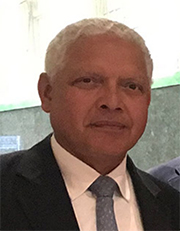A Moment in Bank History
JJ Campos: When Chase Rescued
the Spanish Electric Utility Sector

In 1987, FECSA, the fifth largest private power company in Spain and the largest in Catalunya, shocked the international financial community by announcing suspension de pagos (Chapter 11). The lenders and investors were in an uproar, as many were under the misguided view that the Spanish Government implicitly stood behind the debt of the power companies in the sector. FECSA had taken on a mountain of debt to finance, among others things, the construction of its nuclear plants, a policy imposed on the utilities in the 1970s by earlier governments. The nuclear plants were then mothballed by the Socialist Government when it came to power for the first time in 1982.
Chase was by far the largest arranger of debt for the company and also for the sector at large, although it was not among the largest creditors, as the bank already had a policy of syndicating down as much of its underwritten loans as possible in order to recycle its underwriting and debt arranging capacity. Chase was appointed to head a steering committee consisting of lenders from all over the world. At the inaugural steering committee meeting, the lenders–including the Spanish banks, some of whom were shareholders of FECSA–signed a pact not to refinance or lend any new money to the Spanish electric utility sector until the Government stepped in to rescue FECSA. Chase was the only bank that refused to do so, on grounds that the other electric utilities were financially viable. Notwithstanding, the other lenders felt begrudgingly that it was essential to have Chase continue to lead the steering committee.
Soon all the power companies in Spain were brought to their knees, unable to fund their operations, which created a liquidity crisis for the sector. Chase quickly took a decisive step to support all the companies, providing them with around US$ 600 million of bilateral loans to meet their funding needs and avoid payment defaults on due interest. This was a sizeable amount at the time and an incredibly brave decision, given the intransigence of the financial markets. The bank was confident, however, that the Government was going to support the sector through increased tariffs and other regulatory measures, not least because politically it could neither afford to have the lights turned off in Catalunya and throughout the country, nor alienate the international financial community at a time when Spain needed access to financial markets for economic and industrial growth.
This independent action taken by Chase paid off immensely for the bank. The fees it earned for these loans alone accounted for more than 3x the entire EMEA Syndicated Loan budget for the year. The bank priced the interest margins on these 5-year loans at around 150 basis points, with significant step-ups over time (similar to the pricing on restructured Brazilian Government debt at the time).
This did not please the companies since they had been paying spreads of under 50 basis points, but they had no other option. To alleviate the sting, Chase agreed that if it could sell the debt in future at a lower cost, it would rebate to the relevant company half of the difference between the contractual spread and the margin at which the loan was sold, in other words a 50/50 split on the savings. This still turned out to be highly lucrative for the bank since, within a year to 18 months, the loans were sold at an average spread of around 45 basis points. FECSA itself achieved a remarkable turnaround within less than three years. The Spanish power companies became some of the most profitable clients for the bank over the next 10 years, regularly contributing the largest fee income by far of any of our EMEA clients, as Chase became the debt arranger and financial advisor of choice for the sector.
Personally, I was fortunate to be part of the Chase team in the Steering Committee, something which came to define the rest of my career both at Chase and in the financial markets–even to this day, when, post-retirement, I serve as Chairman of a private equity company that invests in and develops solar plants in Spain. I still come across professionals involved in the industry that remember how Chase rescued the Spanish electric utilities in 1987.
The lesson it taught me is that if you know and trust your client both as an institution and an individual and have the courage of conviction to support them at their time of need, then you are very likely to have a loyal client for life. I do not believe that any other bank could have done what Chase did at the time, and it is a credit to the institution and the then management that it had the foresight to go on its own against the rest of the herd and seek greener pastures.
A New Series
Do you have a story about something you did at Chase (or Chemical, Manufacturers Hanover or the other heritage banks) that helped change the way business was -- and is -- done? Do you want that bit of bank history preserved? Contact Andrea Axelrod at news@chasealum.org.
COMMENTS? Also write to Andrea...
From the author: Further to my article, I should point out that the steering committee set up to deal with the Fecsa Debt crisis was co-chaired by Michael Constant from Sanwa Bank and Ken McTavish from Bank of America, both of whom did an outstanding job in co-ordinating the committee of around 25 banks, and in which Chase played a leading role. Michael later joined Chase Asia in 1989, moving to Chase London a few years later, and is still remembered by those who lived through those difficult days for the important role he played in helping to resolve the crisis.
